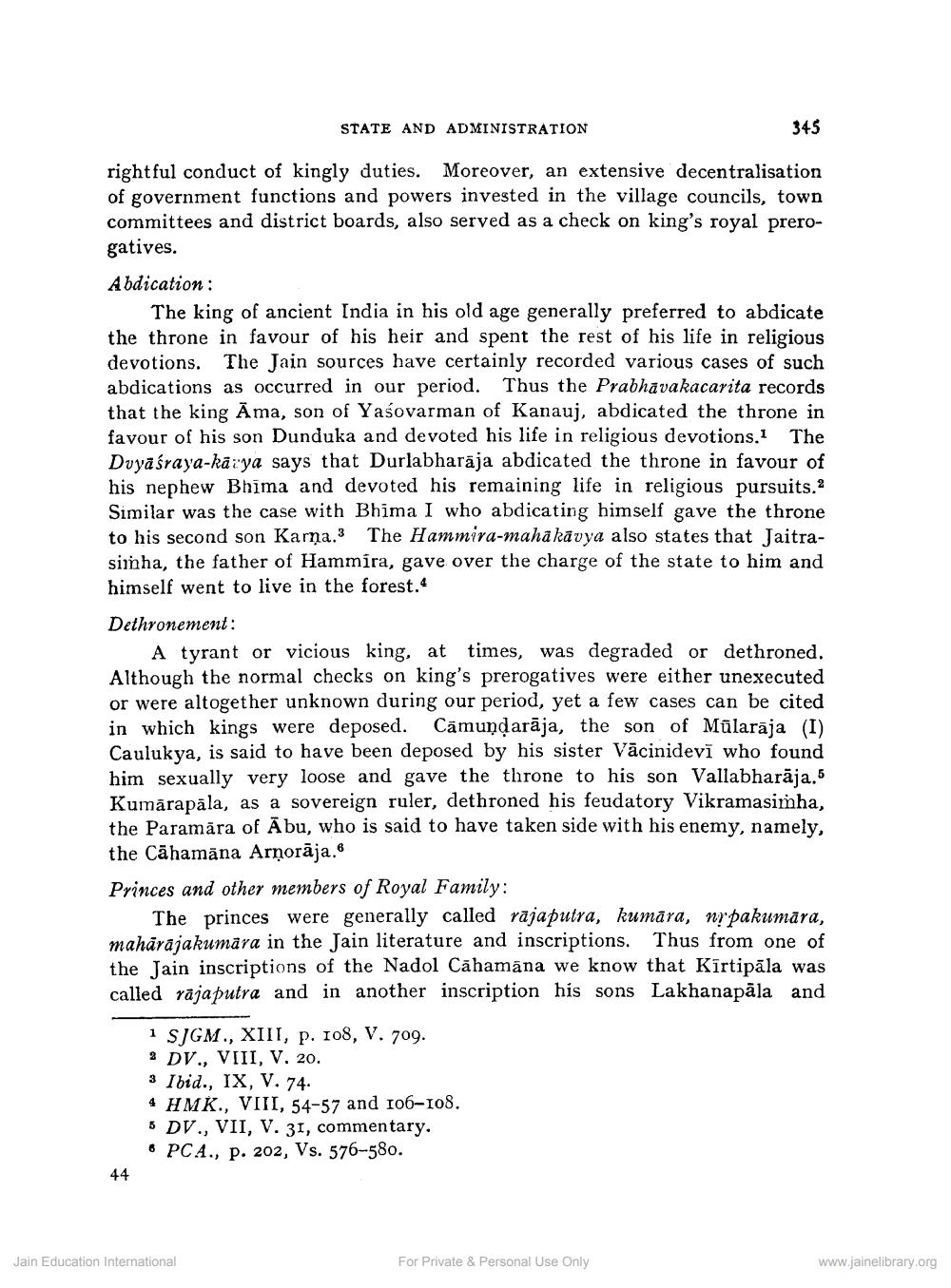________________
STATE AND ADMINISTRATION
345
rightful conduct of kingly duties. Moreover, an extensive decentralisation of government functions and powers invested in the village councils, town committees and district boards, also served as a check on king's royal prerogatives. Abdication :
The king of ancient India in his old age generally preferred to abdicate the throne in favour of his heir and spent the rest of his life in religious devotions. The Jain sources have certainly recorded various cases of such abdications as occurred in our period. Thus the Prabhavakacarita records that the king Ama, son of Yasovarman of Kanauj, abdicated the throne in favour of his son Dunduka and devoted his life in religious devotions.1 The Duyaśraya-karya says that Durlabharāja abdicated the throne in favour of his nephew Bhīma and devoted his remaining life in religious pursuits. Similar was the case with Bhima I who abdicating himself gave the throne to his second son Karņa.3 The Hammira-maha kavya also states that Jaitrasimha, the father of Hammira, gave over the charge of the state to him and himself went to live in the forest. Dethronement:
A tyrant or vicious king, at times, was degraded or dethroned. Although the normal checks on king's prerogatives were either unexecuted or were altogether unknown during our period, yet a few cases can be cited in which kings were deposed. Cāmundarāja, the son of Mūlarāja (I) Caulukya, is said to have been deposed by his sister Vācinidevī who found him sexually very loose and gave the throne to his son Vallabharāja.5 Kumārapāla, as a sovereign ruler, dethroned his feudatory Vikramasimha, the Paramāra of Ābu, who is said to have taken side with his enemy, namely, the Cāhamāna Arņorāja. Princes and other members of Royal Family:
The princes were generally called rajaputra, kumāra, nrpakumara, mahārajakumara in the Jain literature and inscriptions. Thus from one of the Jain inscriptions of the Nadol Cāhamāna we know that Kīrtipāla was called rajaputra and in another inscription his sons Lakhanapāla and
1 SGM., XIII, p. 108, V. 709. 2 DV., VIII, V. 20. 3 Ibid., IX, V. 74. 4 HMK., VIII, 54-57 and 106-108. 5 DV., VII, V. 31, commentary. • PCA., p. 202, Vs. 576-580.
44
Jain Education International
For Private & Personal Use Only
www.jainelibrary.org




